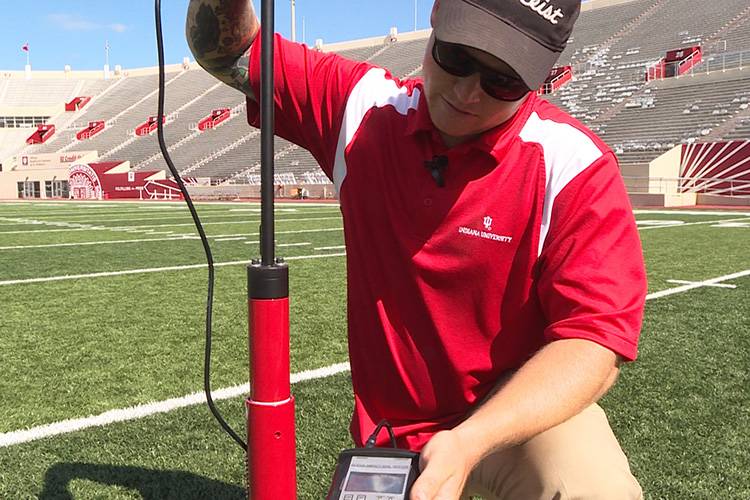
The IU sports turf crew is now testing the hardness of Memorial Stadium's field before each game. (Lindsey Wright, WFIU/WTIU News)
Football is one of the most dangerous sports, but it’s not just contact between players that results in them getting hurt. It’s also contact with the field itself.
NFL teams are required to follow certain field guidelines, all in an effort to offer players a high-quality, safe place to play. One collegiate team in the state is following suit.
Field Crews Work Through The Night To Prep For Colts Game
It’s about 2 a.m. at Lucas Oil Stadium, where the Indianapolis Colts play. But the field is bustling with activity.
Workers are preparing for the Colts to play the following afternoon, and there's a lot of work to be done.
"There’s a brooming process, there’s a grooming process, which is kind of like a rake, there’s a spraying process. You spray for things like MRSA," says Director of Facilities and Grounds Troy Glendenning.
MRSA is a dangerous staph infection that can enter the body through open wounds and cuts. The workers aren’t just disinfecting the field, though.
The field is made up of artificial grass fibers that sit on top of layers of sand and rubber. The field crew uses machines to comb through the crumb rubber that’s packed deep into the field to evenly disperse it. The goal is to make sure the field isn’t too hard, but that it’s also not too soft.
"Basically evening it out 'cause the rubber and sand kind of get displaced and brought to the surface, so that just kind of like a drag, it evens it out," Glendenning says.
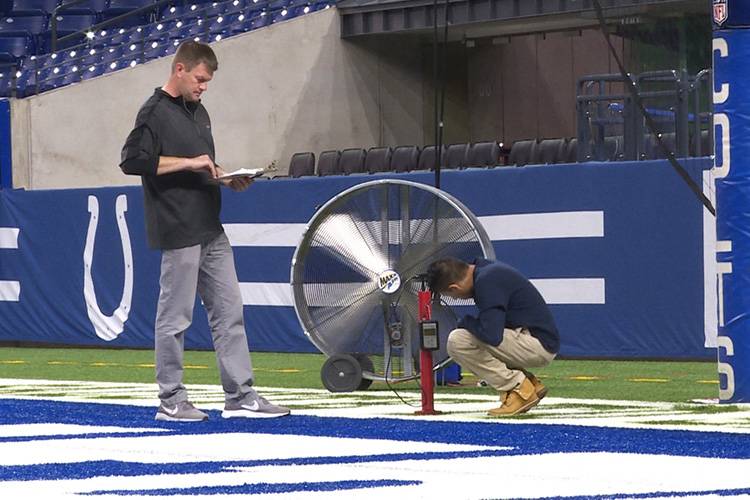
The Colts field crew records readings from the Clegg Impact Tester the morning before a game. (Tyler Lake, WFIU/WTIU News)
The NFL requires teams to test fields, both synthetic and natural, for hardness up to 72 hours before each home game.
They use what’s called a Clegg Impact Tester. It sits about two feet off the ground and drops a weight onto the field, then provides a reading. They repeat the Clegg test in multiple spots on the field.
"It could be really good somewhere and where there’s a lot of traffic, say golf carts coming in and out, now we could be too hard," Glendenning says.
The Clegg test has to measure within a certain range. After testing, Glendenning does a visual inspection of the field. If he thinks the field looks good, he signs off on it.
Glendenning says NFL teams have been testing their fields like this for a long time, but the league started to pay more attention to the testing within the last few years.
"We had an instance last year, they painted some logos on the field and they painted it too thick," he says. "Now we got a problem because a cleat wouldn’t even go in it."
Glendenning says multiple NFL officials were on site to ensure the issue was fixed before the teams played on the field. He says most of the time there aren’t close calls like that because the field crew has the tools to make sure the field is in proper shape.

IU Now Testing Field Before Each Game
All the prep work ensures athletes are playing on a level field and are less likely to get an injury, like a concussion. It’s the reason Indiana University’s sports turf management crew is following the NFL’s lead.
Jeremy Tredway, IU's sports turf manager, says his crew isn't required to do the testing like at the professional level.
"I was actually at a Big Ten facilities meeting a few years back and overheard another Big Ten university talking about how they Clegg test their field before each game to be proactive," Tredway says. "And I thought it would be nice on our end to start implementing that."
Before, Memorial Stadium's field was only tested a couple times a year. This year, the group started testing the day before each game. They want to get a reading under 200, which isn't difficult. Tredway says the field typically test pretty well.
If it didn’t, just like the Colts crew, they can use machines to break up the compacted rubber pieces and smooth out the field.
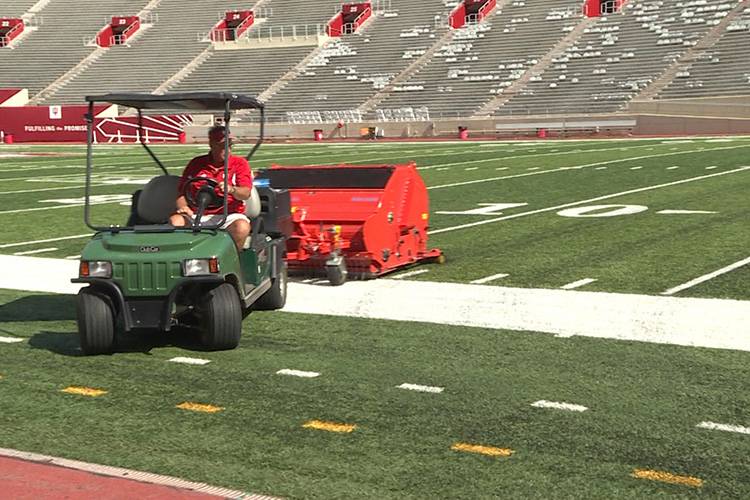
The IU sports turf crew uses machines to evenly disperse rubber pieces across the field. (Zach Herndon, WFIU/WTIU News)
Tredway says the number one reason for testing more often is to make the field safer for players.
"On a secondary level, it kind of gives us a gauge of how our fields are holding up," he says. "If we’re getting a field that’s six, seven years old and it’s testing higher than we like, we may think about having to replace that field."
Tredway says he anticipates the testing requirements will eventually trickle down from the NFL to the collegiate level, and Glendenning agrees.
"It should probably trickle down even further than that 'cause a lot of high schools are getting these fields, and they’re not maintained properly," Glendenning says.
The numerous hours spent preparing the field may go unrecognized by the fans who pack into the stadium seats, hoping for an exciting game.
But the game really couldn't happen without the folks behind the scenes, and they're often going above and beyond to make sure your favorite running back or wide receiver doesn't end up on the sidelines.
Glendenning says his crew tests the team’s practice fields in addition to the Lucas Oil field, which isn't required. And IU's sports turf crew is also testing other athletic fields at least a couple times a year, in addition to Memorial Stadium.
 DONATE
DONATE

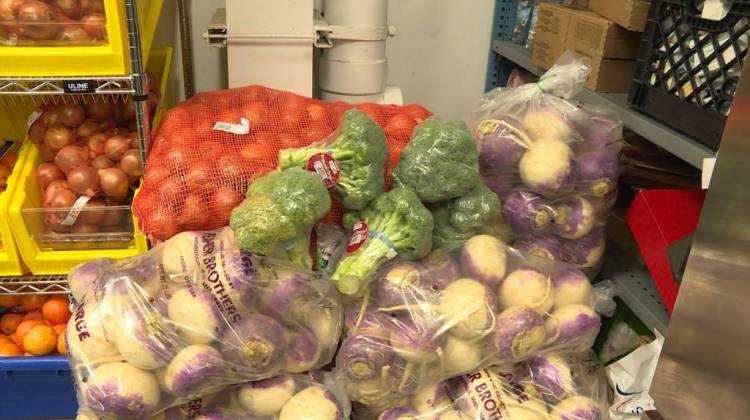
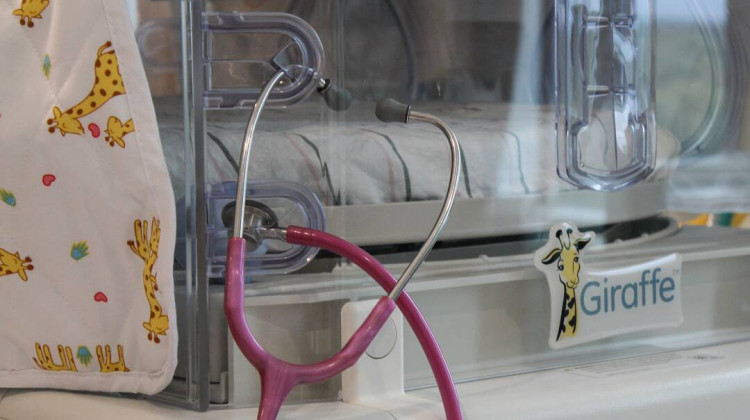
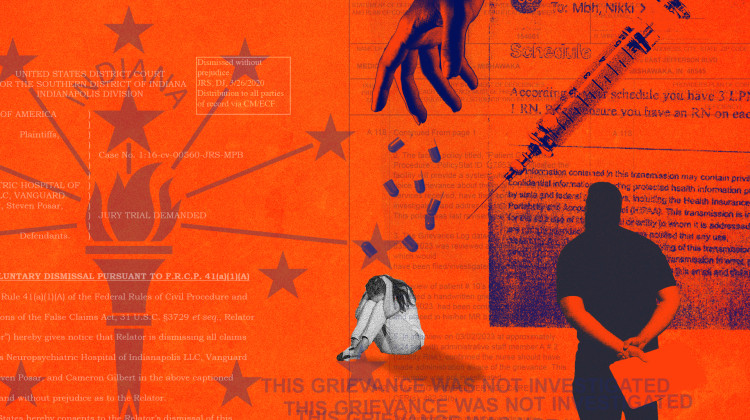


 Support WFYI. We can't do it without you.
Support WFYI. We can't do it without you.